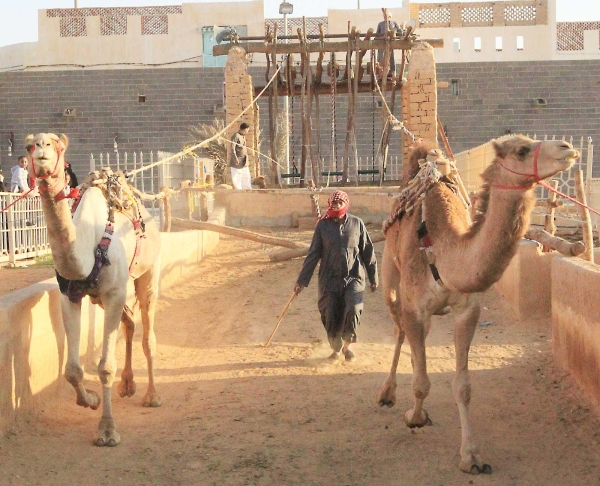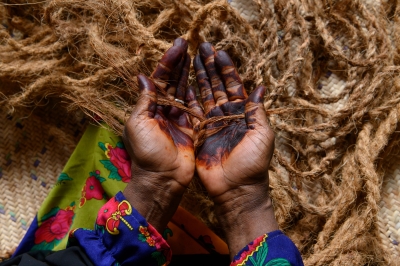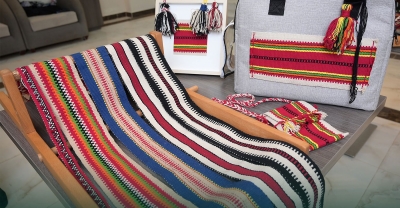
Al-Sawani is one of the professions that people relied on in the past to extract water from deep wells. It was renowned in most rural areas of the Kingdom of Saudi Arabia, and it depended on trained animals for this purpose, including camels, bulls, and donkeys. The tools used include al-Rasha, al-Sareeh, al-Maqat, al-Dhamad, and others. This profession was widespread in several provinces of the Kingdom.
Tools of al-Sawani profession
The tools and equipment used in al-Sawani profession for the water extraction process include:
- Al- Ghirb (singular Arabic term is Ghirbah): It is the tool used to draw water from the well. It is made of thick leather in the shape of a container, about one m long. It has two openings: one is Fahwat al-Ghirb, and the other is Kim al-Ghirb, containing the Shara'ah, where al-Sareeh is tied. Through this opening, the water is poured into al-Liza while al-Ghirb is raised upwards.
- Al-Liza: It is the place where al-Ghirb directs the water drawn from the well. Its length matches the well's width and its width is narrower. With sides standing about one m tall, water flows out from al-Liza through a top opening to remain full.
- Aroos al-Liza: It is a piece of stone in the center of al-Liza. It serves as a platform for those seeking to undertake repairs in al-Draajah, al-Sareeh, and others.
- Al-Sareeh: It is made of camel hide and connected to the mouth of al-Ghirb.
- Al-Jabiyah: It is the water collection point after it is extracted from the well and passes through al-Liza.
- Al-Kalah: The sides of al-Saqi or al-Sharb through which the water flows.
- Al-Rasha: It is a sturdy rope made of twisted fibers and used to extract water from the well.
- Al-Dallo al-Musabba': A rope made of fibers lowered into the bottom of the well, which a person can hold onto when descending or ascending.
- Al-Mahala: A device made of Tamarix wood, equipped with teeth, with al-Rasha inside it. It resembles a wheel, with the teeth interlocked by camel hide.
The trained animals move in a circular path for a certain distance within a dug-out area called al-Manhat. They halt once al-Ghirb reaches the bottom of the well, refilling it before repeating the process. Water flows from al-Ghirb into al-Liza for collection and subsequent distribution.
Al-Mahala in al-Sawani Profession
Al-Mahala holds exceptional importance, prompting practitioners to choose the best quality wood for it to ensure the safety of its sound during song. Some refer to this as al-Sawani's voice. In times past, the so-called al-Baraham was used, which is a type of tree whose sticks were placed within al-Mahala to give it a beautiful sound, akin to the branches of fig and Auricula trees.
Other tools used in al-Sawani Profession include al-Qub. It is made of Tamarix wood and the teeth of al-Mahala are affixed to it. It features an opening within it. Al-Mehwar (axis): It is made of wood and inserted into the center of al-Qub, around which al-Mahala rotates. Al-Draajah: It is a cylindrical wooden piece, flanked by iron on either side, affixed to a pole for rotation, with al-Sareeh mounted atop. Al-Zaraniq: It is a structure on the sides of the well. These are columns made of clay and stone. At the top of these columns are al-Dawamigh (pulleys) and al-Anba' (rope-rolls). Additionally, there are small openings in the wall of al-Zaraniq that allow a person to look into the center of the well.
Related quizzes
Related articles


